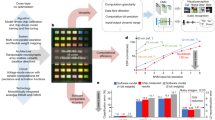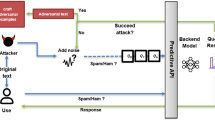Abstract
Despite the great potential of deep neural networks (DNNs), they require massive weights and huge computational resources, creating a vast gap when deploying artificial intelligence at low-cost edge devices. Current lightweight DNNs, achieved by high-dimensional space pre-training and post-compression, present challenges when covering the resources deficit, making tiny artificial intelligence hard to be implemented. Here we report an architecture named random sketch learning, or Rosler, for computationally efficient tiny artificial intelligence. We build a universal compressing-while-training framework that directly learns a compact model and, most importantly, enables computationally efficient on-device learning. As validated on different models and datasets, it attains substantial memory reduction of ~50–90× (16-bits quantization), compared with fully connected DNNs. We demonstrate it on low-cost hardware, whereby the computation is accelerated by >180× and the energy consumption is reduced by ~10×. Our method paves the way for deploying tiny artificial intelligence in many scientific and industrial applications.
This is a preview of subscription content, access via your institution
Access options
Access Nature and 54 other Nature Portfolio journals
Get Nature+, our best-value online-access subscription
$29.99 / 30 days
cancel any time
Subscribe to this journal
Receive 12 digital issues and online access to articles
$99.00 per year
only $8.25 per issue
Buy this article
- Purchase on Springer Link
- Instant access to full article PDF
Prices may be subject to local taxes which are calculated during checkout





Similar content being viewed by others
Data availability
The bearing data (https://csegroups.case.edu/bearingdatacenter), the MNIST data (http://yann.lecun.com/exdb/mnist/), the CIFAR-10 data (https://www.cs.toronto.edu/kriz/cifar.html) and the Cat–dog data (https://www.kaggle.com/c/dogsvs-cats/data) can be all downloaded from the corresponding websites. Source Data for Figs. 2–5 is also available with this manuscript.
Code availability
A Python implementation of Rosler is available in Code Ocean52.
References
Lecun, Y., Bengio, Y. & Hinton, G. E. Deep learning. Nature 521, 436–444 (2015).
Silver, D. et al. Mastering the game of Go with deep neural networks and tree search. Nature 529, 484–489 (2016).
Reichstein, M. et al. Deep learning and process understanding for data-driven Earth system science. Nature 566, 195–204 (2019).
Jihong, P., Samarakoon, S., Mehdi, B. & Debba, M. Wireless network intelligence at the edge. Proc. IEEE 107, 2204–2239 (2019).
Hiroshi, D. & Roberto, M. TinyML as-a-Service: What is it and what does it mean for the IoT Edge? Ericsson https://www.ericsson.com/en/blog/2019/12/tinyml-as-a-service-iot-edge (2019).
Vaughan, O. Working on the edge. Nat. Electron. 2, 2–3 (2019).
Burger, B. et al. A mobile robotic chemist. Nature 583, 237–241 (2020).
Wang, J., Ma, Y., Zhang, L., Gao, R. X. & Wu, D. Deep learning for smart manufacturing: methods and applications. J. Manuf. Syst. 48, 144–156 (2018).
Simons, F. J. et al. On the potential of recording earthquakes for global seismic tomography by low-cost autonomous instruments in the oceans. J. Geophys. Res. Solid Earth 114, B05307 (2009).
Kiran, B. R. et al. Deep reinforcement learning for autonomous driving: a survey. IEEE Trans. Intell. Transport. Syst. https://doi.org/10.1109/TITS.2021.3054625 (2021).
Weiss, B. A., Pellegrino, J., Justiniano, M. & Raghunatha, A. Measurement Science Roadmap for Prognostics and Health Management for Smart Manufacturing Systems (National Institute of Standards and Technology, 2016); https://doi.org/10.6028/NIST.AMS.100-2
Smith, W. A. & Randall, R. B. Rolling element bearing diagnostics using the Case Western Reserve University data: a benchmark study. Mech. Syst. Signal Process. 64, 100–131 (2015).
Hiroshi, D., Roberto, M. & Höller, J. Bringing machine learning to the deepest IoT edge with TinyML as-a-service. IEEE IoT Newsletter—March 2020 (2020).
Hiroshi, D. & Roberto, M. TinyML as a service and the challenges of machine learning at the edge. Ericsson https://www.ericsson.com/en/blog/2019/12/tinyml-as-a-service (2019).
Ward-Foxton, S. Adapting the microcontroller for AI in the endpoint. EE Times https://www.eetimes.com/adapting-the-microcontroller-for-ai-in-the-endpoint/ (2020).
Loukides, M. TinyML: the challenges and opportunities of low-power ML applications. O’Reilly https://www.oreilly.com/radar/tinyml-the-challenges-and-opportunities-of-low-power-ml-applications/ (2019).
Reddi, V. J. Enabling ultra-low power machine learning at the edge. In TinyML Summit 2020 (TinyML, 2020); https://cms.tinyml.org/wp-content/uploads/summit2020/tinyMLSummit2020-4-4-JanapaReddi.pdf
Koehler, G. MNIST handwritten digit recognition in Keras. Nextjournal https://nextjournal.com/gkoehler/digit-recognition-with-keras (2020).
Xu, X. et al. Scaling for edge inference of deep neural networks. Nat. Electron. 1, 216–222 (2018).
Sze, V., Chen, Y. H., Yang, T. J. & Emer, J. S. Efficient processing of deep neural networks: a tutorial and survey. Proc. IEEE 105, 2295–2329 (2017).
Gao, M., Pu, J., Yang, X., Horowitz, M. & Kozyrakis, C. Tetris: scalable and efficient neural network acceleration with 3D memory. In Proc. 22nd International Conference on Architectural Support for Programming Languages and Operating Systems Vol. 45, 751–764 (ACM, 2017).
Li, C., Miao, H., Li, Y., Hao, J. & Xia, Q. Analogue signal and image processing with large memristor crossbars. Nat. Electron. 1, 52–59 (2018).
Prezioso, M. et al. Training and operation of an integrated neuromorphic network based on metal-oxide memristors. Nature 521, 61–64 (2015).
NVIDIA Tesla P100. NVIDIA www.nvidia.com/object/tesla-p100.html (2017).
Han, S., Pool, J., Tran, J. & Dally, W. J. Learning both weights and connections for efficient neural networks. In Proc. Neural Information Processing Systems 1135–1143 (NIPS, 2015).
Wen, W., Wu, C., Wang, Y., Chen, Y. & Li, H. Learning structured sparsity in deep neural networks. In Proc. Neural Information Processing Systems 2074–2082 (NIPS, 2016).
Han, S., Mao, H. & Dally, W. J. Deep compression: compressing deep neural networks with pruning, trained quantization and Huffman coding. In Proc. International Conference on Learning Representations 1–14 (ICLR, 2015).
Frankle, J. & Carbin, M. The lottery ticket hypothesis: finding sparse, trainable neural networks. In Proc. International Conference on Learning Representations 1–42 (ICLR, 2018).
Lee, N., Thalaiyasingam, A. & Torr, P. H. SNIP: single-shot network pruning based on connection sensitivity. In Proc. International Conference on Learning Representations 1–15 (ICLR, 2019).
Denil, M., Shakibi, B., Dinh, L., Ranzato, M. & De Freitas, N. Predicting parameters in deep learning. In Proc. Neural Information Processing Systems 2148–2156 (NIPS, 2013).
Jaderberg, M., Vedaldi, A. & Zisserman, A. Speeding up convolutional neural networks with low rank expansions. In Proc. British Machine Vision Conference 1–13 (BMVC, 2014).
Zhou, T. & Tao, D. GoDec: randomized low-rank & sparse matrix decomposition in noisy case. In Proc. International Conference on Machine Learning 33–40 (ICML, 2011).
Yu, X., Liu, T., Wang, X. & Tao, D. On compressing deep models by low rank and sparse decomposition. In Proc. International Conference on Computer Vision and Pattern Recognition 67–76 (CVPR, 2017).
Lee, E. H., Miyashita, D., Chai, E., Murmann, B. & Wong, S. S. LogNet: energy-efficient neural networks using logarithmic computation. In Proc. IEEE International Conference on Acoustics, Speech and Signal Processing 5900–5904 (IEEE, 2017).
Dong, X. & Yang, Y. Network pruning via transformable architecture search. In Proc. Neural Information Processing Systems 760–771 (NIPS, 2019).
Guo, Y. et al. NAT: neural architecture transformer for accurate and compact architectures. In Proc. Neural Information Processing Systems 737–748 (NIPS, 2019).
Blalock, D. W., Ortiz, J. J. G., Frankle, J. & Guttag, J. V. What is the state of neural network pruning? in Proceedings of Machine Learning and Systems 2020 (MLSys) 1-18 (2020).
Yang, Q. et al. Federated machine learning: concept and applications. ACM Trans. Intell. Syst. Technol. 10, 1–19 (2019).
Bonawitz, K. et al. Practical secure aggregation for federated learning on user-held data. In Proc. Neural Information Processing Systems (NIPS, 2016).
Silva, S., Gutman, B. A., Romero, E., Thompson, P. M. & Lorenzi, M. Federated learning in distributed medical databases: meta-analysis of large-scale subcortical brain data. In Proc. IEEE International Symposium on Biomedical Imaging 270–274 (IEEE, 2019).
Mcmahan, H. B., Moore, E., Ramage, D., Hampson, S. & Agüera y Arcas, B. Communication-efficient learning of deep networks from decentralized data. In Proc. 20th International Conference on Artificial Intelligence and Statistics 1–11 (AISTATS, 2017).
Simonyan, K. & Zisserman, A. Very deep convolutional networks for large-scale image recognition. In Proc. International Conference on Learning Representations 1–14 (ICLR, 2015).
Lym, S. et al. PruneTrain: fast neural network training by dynamic sparse model reconfiguration. In Proc. International Conference for High Performance Computing, Networking, Storage and Analysis 1–13 (ACM, 2019).
Lu, Y., Huang, X., Zhang, K., Maharjan, S. & Zhang, Y. Low-latency federated learning and blockchain for edge association in digital twin empowered 6G networks. IEEE Trans. Industr. Inform. https://doi.org/10.1109/TII.2020.3017668 (2020).
Brisimi, T. S. et al. Federated learning of predictive models from federated electronic health records. Int. J. Med. Inform. 112, 59–67 (2018).
Glorot, X. & Bengio, Y. Understanding the difficulty of training deep feedforward neural networks. In Proc. Thirteenth International Conference on Artificial Intelligence and Statistics 249–256 (JMLR, 2010).
Wang, S. & Zhang, Z. Improving CUR matrix decomposition and the nyström approximation via adaptive sampling. J. Mach. Learn. Res. 14, 2729–2769 (2013).
Drineas, P., Mahoney, M. W. & Muthukrishnan, S. Relative-error CUR matrix decompositions. SIAM J. Matrix Anal. Appl. 30, 844–881 (2008).
Li, B. et al. Randomized approximate channel estimator in massive-MIMO communication. IEEE Commun. Lett. 24, 2314–2318 (2020).
Li, B. et al. Fast-MUSIC for automotive massive-MIMO radar. Preprint at https://arxiv.org/abs/1911.07434 (2019).
Kingma, D. P. & Ba, J. Adam: a method for stochastic optimization. In Proc. International Conference on Learning Representations 1–15 (ICLR, 2015).
Li, B., Liu, H. & Chen, P. Random sketch learning for tiny AI. Code Ocean https://doi.org/10.24433/CO.5227764.v1 (2021).
Acknowledgements
This work was supported by the Major Scientific Instrument Development Plan of National Natural Science Foundation of China (NSFC) under grant no. 61827901, NSFC under grant no. U1805262, Major Research Plan of NSFC under grant no. 91738301 and Project of Basic Science Center of NSFC under grant no. 62088101.
Author information
Authors and Affiliations
Contributions
B.L. conceived the idea. B.L., P.C. and H.L. designed and implemented the source code. B.L., P.C., H.L., W.G. and X.C. analyzed the data. All the authors together interpreted the findings and wrote the paper. P.C. and H.L. contributed equally.
Corresponding authors
Ethics declarations
Competing interests
The authors declare no competing interests.
Additional information
Peer review information Nature Computational Science thanks Jingtong Hu, Xiaowei Xu and the other, anonymous, reviewer(s) for their contribution to the peer review of this work. Fernando Chirigati was the primary editor on this article and managed its editorial process and peer review in collaboration with the rest of the editorial team.
Publisher’s note Springer Nature remains neutral with regard to jurisdictional claims in published maps and institutional affiliations.
Supplementary information
Supplementary Information
Supplementary text, Figs. 1–6 and Tables 1 and 2.
Source data
Source Data Fig. 2
Raw data of 50 trails.
Source Data Fig. 3
Test accuracy and gain of memory/computation reduction.
Source Data Fig. 4
Test accuracy and gain of memory/computation reduction.
Source Data Fig. 5
Raw data of computation time and power.
Rights and permissions
About this article
Cite this article
Li, B., Chen, P., Liu, H. et al. Random sketch learning for deep neural networks in edge computing. Nat Comput Sci 1, 221–228 (2021). https://doi.org/10.1038/s43588-021-00039-6
Received:
Accepted:
Published:
Issue Date:
DOI: https://doi.org/10.1038/s43588-021-00039-6
This article is cited by
-
Machine learning-enabled globally guaranteed evolutionary computation
Nature Machine Intelligence (2023)
-
Lead federated neuromorphic learning for wireless edge artificial intelligence
Nature Communications (2022)
-
Efficient deep learning
Nature Computational Science (2021)



